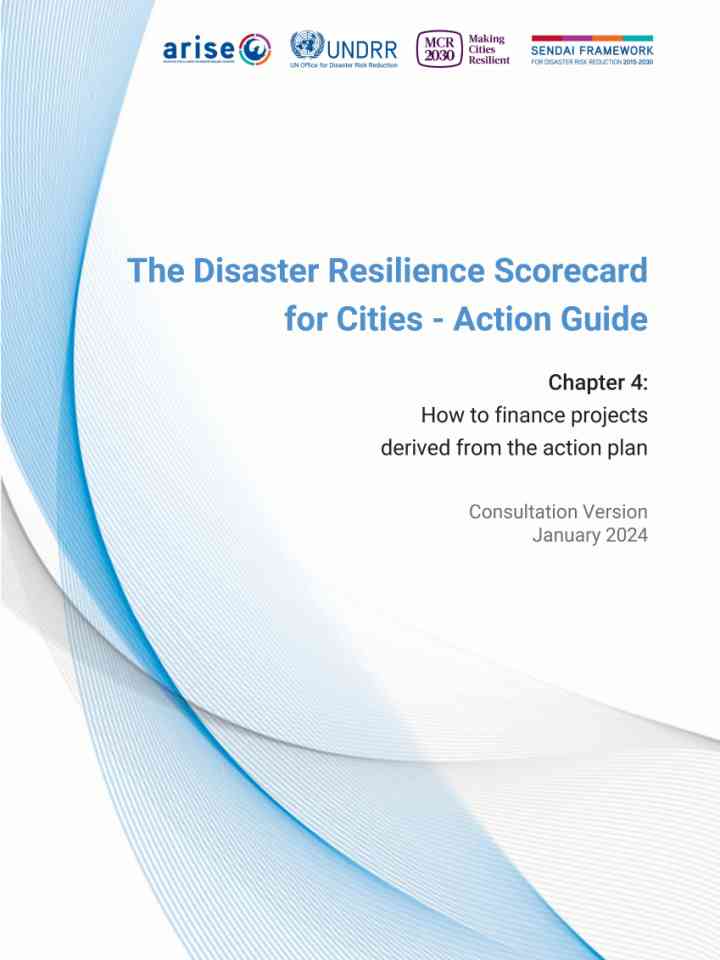The Disaster Resilience Scorecard for Cities – Action Guide. Chapter 4: How to finance projects derived from the action plan
The Guide is a result of contributions from the ARISE-US Network in collaboration with the United Nations Office for Disaster Risk Reduction (UNDRR) and the Making Cities Resilient 2030 initiative.
The UNDRR Disaster Resilience Scorecard for Cities is proven to be a very helpful tool in assessing all the ‘systems of systems’ aspects of disaster resilience and creating a holistic ‘baseline’ of city’s strengths and weaknesses. While it helps cities identify gaps and potential areas of improvement, it is less effective at helping cities prioritize and figure out next steps. Based on results from a survey and feedback from local governments and stakeholders, this Action Guide aims to provide ‘how-to’ steps to support local governments in developing and implementing an action plan to address gaps identified in their resilience strategies based on the assessment results from the use of the UNDRR Disaster Resilience Scorecard for Cities.
The Action Guide has a number of chapters:
- Chapter 1 – Overview of the survey results
- Chapter 2 – How to create a prioritized action plan and prepare projects
- Chapter 3 – How to engage with the community
- Chapter 4 – How to finance projects derived from the action plan (this chapter)
- Annex – Compendium of Standards that are applicable for cities
The primary purpose of this section of the Scorecard Action Guide is to help communities (defined as any unit of settlement seeking finance, from "village" through" suburb" to towns and cities or municipalities), and their teams who may have no finance expertise, create such a plan. It explains the types of funding available, presents opportunities for securing funds, sets out ideas for how to proceed and provides checklists for evaluating how well their particular resilience project matches the fund providers’ expectations and requirements.
